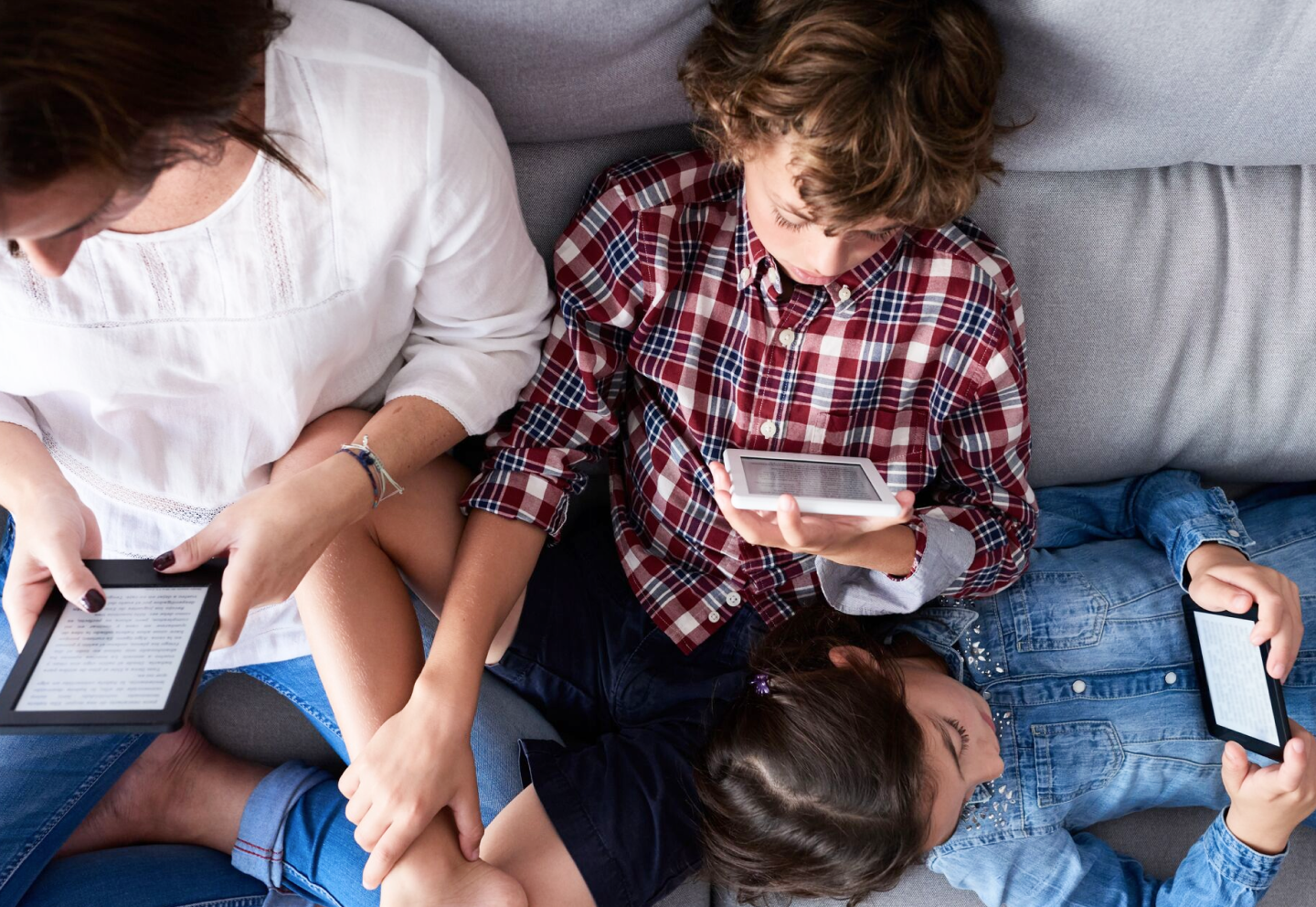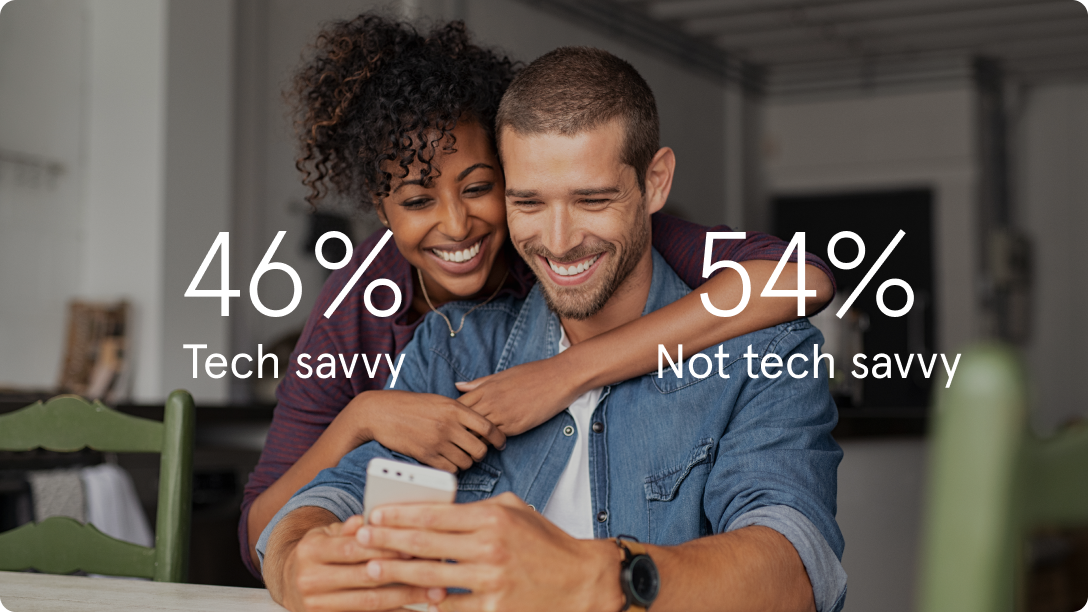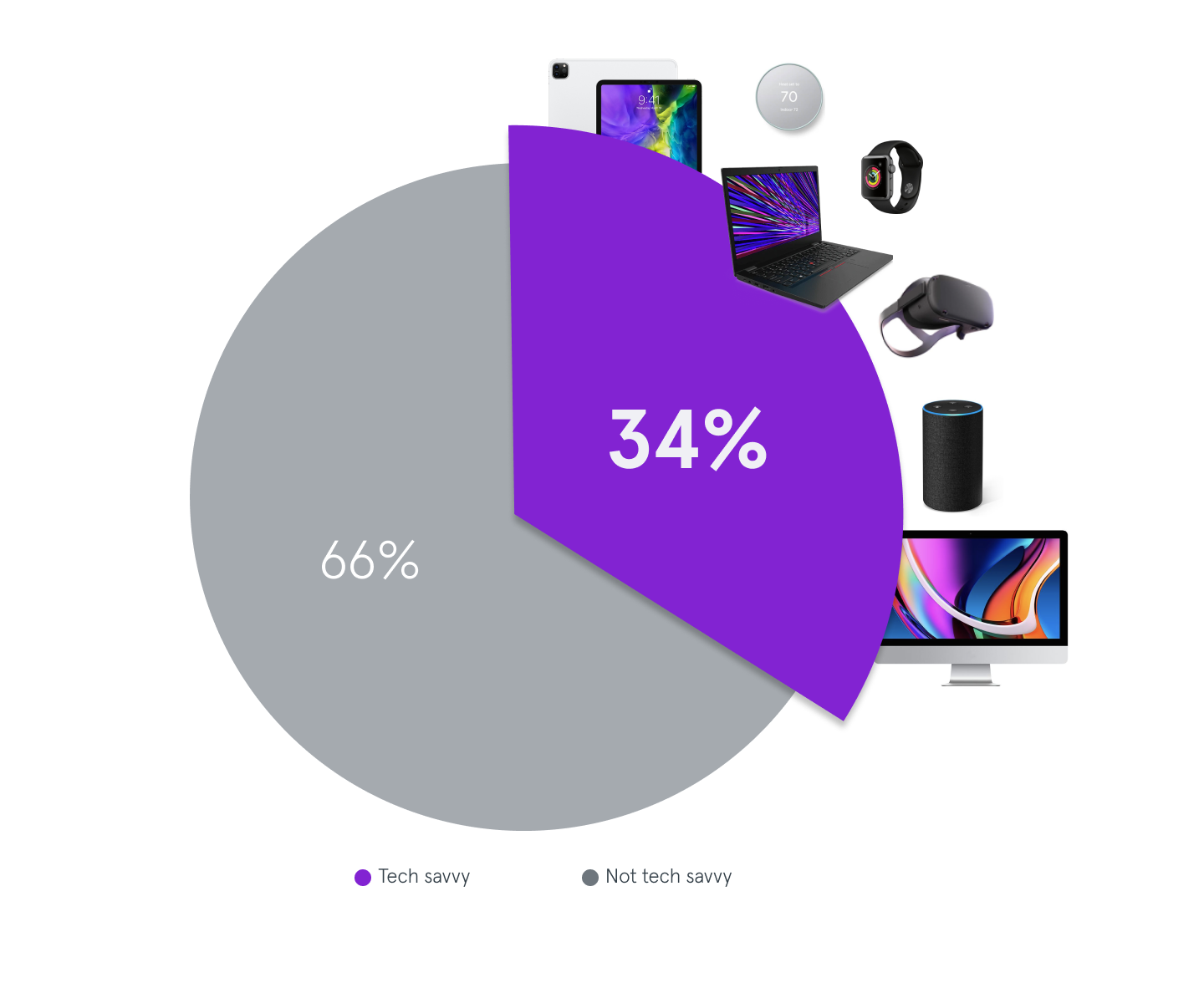

Part 2: The “tech savvy” phenomenon
What it is, what it looks like, and what it means.
What tech savvy looks like
What does it mean to be tech savvy? For starters, it greatly increases the likelihood of owning 13 of the 21 smart devices we focused on in this study. Plus, tech-savvy consumers are more likely to own devices that fall into the realm of cool, contemporary tech.

They may not be in charge ...
More than half of those who are not tech savvy (54%) are also the primary tech decision maker for their household.

... but they like buying gadgets
One-third of tech-savvy consumers will buy tech because it's new and exciting versus just 1 in 4 not tech-savvy people.

Speed of tech adoption
Most people wait until new tech is popular before they try it. But within the tech-savvy group, the majority claim to be either the very first (30%) or among the first (38%) to try new devices. But less adventurous users wait until devices are popular.
